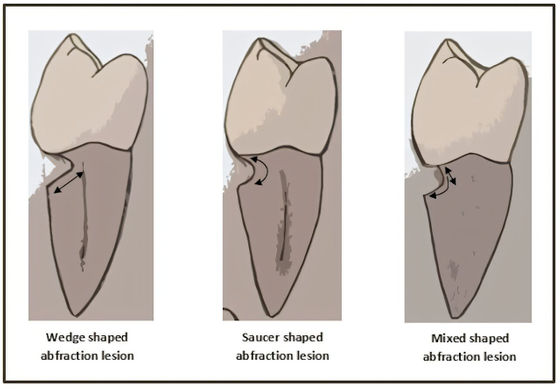The theory that ancient humans cleaned their teeth with toothpicks may be incorrect

The presence of vertical grooves in the teeth of ancient humans, which resemble those made by toothpicks, has led to the discovery that these grooves, known as 'toothpick grooves,' are evidence of human tool use. However, it has been discovered that these grooves also occur naturally in wild primates, suggesting that they may not be evidence of tool use.
Non‐Carious Cervical Lesions in Wild Primates: Implications for Understanding Toothpick Grooves and Abfraction Lesions - Towle - 2025 - American Journal of Biological Anthropology - Wiley Online Library

'Toothpick grooves' in ancient fossil human teeth may not be from toothpicks after all
'Toothpick grooves' are small grooves found in the teeth of ancient people. They have been found on a variety of teeth, from front to back teeth, and traces of friction have been found. Until now, the leading theory has been that these grooves may have been formed when ancient people used tools such as sticks or fibers to clean their teeth or relieve sore gums.
Toothpick grooves have been reported throughout evolutionary history in human relatives, from early Homo genus approximately 1.9 million years ago to Neanderthals approximately 40,000 years ago. However, whether similar grooves exist in other primates had not been examined.

Ian Towle and his colleagues at Monash University in Australia studied 531 primates from 27 species, including both extant and extinct species, and analyzed the characteristics of their teeth.
The samples included gorillas, orangutans, macaques, colobus monkeys, and fossil apes, and the researchers found that about 4% of the specimens had grooves that were almost identical to the 'toothpick grooves.'
On the other hand, they also found that abfractions, a common lesion in modern humans, are completely absent in other primates. Abfractions are wedge-shaped grooves that form between the teeth and gums due to factors such as teeth grinding, vigorously brushing, and drinking acidic beverages.

Because abfractions were only found in modern humans, 'this lesion is likely a unique human problem linked to modern habits,' Towle said. 'It highlights how our diet and lifestyle profoundly alter our teeth in ways that are different from other primates,' he added.
Taking into account the fact that toothpick grooves were found in primates that do not clean their teeth, and the possibility that changes in tooth shape can be caused by lifestyle habits, Towle and his colleagues concluded that the toothpick grooves seen in ancient humans do not necessarily indicate the use of tools.
'By comparing human teeth with other primates, we can distinguish between inevitable wear caused by chewing and unique human factors that result from modern diet, behavior, and dental care,' said Towle. 'The grooves on fossil hominin teeth could be a by-product of everyday chewing or could reflect other cultural or dietary behaviors. Disentangling these possibilities requires a significantly expanded dataset of primate pathologies.'
Related Posts:
in Science, Posted by log1p_kr







